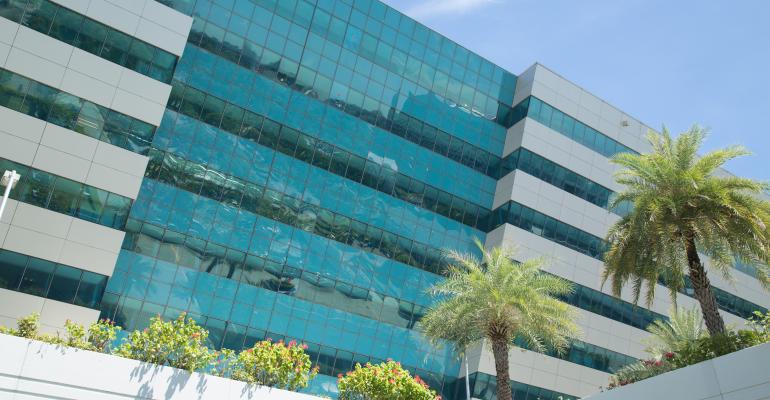Real estate services firm Marcus & Millichap presented its 2019 office and industrial forecast during a webinar on Tuesday, signaling mostly positive outlooks for both sectors as the industry nears the end of this economic cycle. Here are some key points from the presentation.
- All suburban office properties are not the same. Prices are at record highs for office assets located in highly walkable suburban areas, particularly compared to somewhat walkable and car-dependent locations, said Jim Costello, senior vice presidents at research firm Real Capital Analytics (RCA), who was a panelist on Tuesday. “Definitely it’s the case that you’re getting higher cap rates looking into suburban areas, and the further out you go into more car culture areas, you’re getting a higher cap rate,” he said. “That’s just part of the dynamics there.” There is also a fairly wide gap in cap rates between assets located in highly walkable and car-dependent locations, meaning investors need to make asset-level decisions on acquisitions, noted panelist Alan Pontius, senior vice president and national director of specialty divisions at Marcus & Millichap.
- Single-asset suburban office sales were at record levels in the third quarter. “We’re well above where we had been before the pre-GFC [great financial crisis] peak,” Costello said.
- This economic cycle has been one of the longest in the U.S., but one metric that could signal restrained growth is labor force shortages, said panelist John Chang, senior vice president of research services at Marcus & Millichap. This has led to a more competitive recruiting environment and has started to impact office space allocation and desirability of locations, he notes. There are 7 million job openings currently, but just 6.1 million people looking for work, generating more demand for office space as well, he noted.
- Two big inflationary metrics to watch: tariffs and rising construction costs because of labor and material price increases, Chang said. “Both of these are inflationary in nature,” he added. Chang said the cost of construction labor has accelerated, impacting development pipelines. Meanwhile, rising tariff prices hike up materials costs for new developments, and those hikes could soon be passed on to consumers, Chang said. President Donald Trump on Monday said he expects to boost tariff levels on $200 billion of Chinese goods to 25 percent, the Wall Street Journal reported.
- Industrial construction is slowing, but vacancies remain steady. The industry is starting to respond to higher costs, helping to ease construction rush, Chang said. Meanwhile, vacancy rates nationally hover in the 4 percent range. Major industrial hub markets, such as Dallas and Chicago, have seen a flattening of vacancy rates because of construction there. Meanwhile, port markets—such as Houston or Seattle—are very tight, with little room to compress, Chang said. The same goes for local service markets like Cleveland, for example.
0 comments
Hide comments

